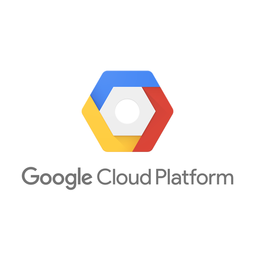下载PDF
Mumzworld Reaches 300% Roas With Enhanced Ecommerce and Data Import From Google Analytics
技术
- 分析与建模 - 实时分析
- 应用基础设施与中间件 - API 集成与管理
适用行业
- 零售
- 电子商务
适用功能
- 销售与市场营销
- 商业运营
用例
- 库存管理
- 供应链可见性(SCV)
- 需求计划与预测
服务
- 数据科学服务
- 系统集成
挑战
Mumzworld 是中东地区最大的母婴儿童用品购物网站,目前正面临着如何明智地花费广告费的挑战。该公司拥有大量用户数据,但需要更好地利用这些数据。他们希望增加在线销售量和回头客数量,降低用户获取和转化成本,在渠道投资方面更加以数据为导向,并更好地管理现场库存以降低缺货产品浏览量。为了寻求帮助,Mumzworld 向 InfoTrust 求助,InfoTrust 是一家专门从事电子商务数据集成的 Google Analytics 认证合作伙伴。
关于客户
Mumzworld 是中东最大的母婴儿童购物网站。该公司在多个平台上投放广告,并努力通过最佳产品目录吸引消费者。该公司拥有大量用户数据,但需要更有效地利用这些数据。他们希望增加在线销售量和回头客,降低用户获取和转化成本,在渠道投资方面更加以数据为导向,并更好地管理现场库存,以降低缺货产品浏览量。
解决方案
Mumzworld 和 InfoTrust 团队首先实施了 Google Analytics 增强型电子商务。产品和渠道的自定义数据属性有助于显示除带来最大利润的渠道之外的结果。例如,Mumzworld 为用户看到的缺货产品设置了一个自定义指标。通过将这些浏览量与其他数据(如添加到购物车操作)进行比较,Mumzworld 库存团队可以快速决定补货哪些产品。这有助于他们确保消费者始终可以买到顶级品牌。InfoTrust 使用 Analyze.ly 连接多个数据源,尤其是非 Google 渠道。这使得将多个渠道的成本数据上传到 Google Analytics 变得非常容易。突然间,团队可以看到其所有广告平台的每次点击回报率 (RPC) 和广告支出回报率 (ROAS) 等指标。借助来自增强型电子商务和渠道成本集成的更多数据,InfoTrust 构建了自定义仪表板和报告,以显示 Mumzworld 表现最佳的利润渠道,而不仅仅是收入。基于 ROAS 的广告系列和关键字优化帮助公司最大限度地提高了利润。
运营影响
数量效益
相关案例.

Case Study
Improving Production Line Efficiency with Ethernet Micro RTU Controller
Moxa was asked to provide a connectivity solution for one of the world's leading cosmetics companies. This multinational corporation, with retail presence in 130 countries, 23 global braches, and over 66,000 employees, sought to improve the efficiency of their production process by migrating from manual monitoring to an automatic productivity monitoring system. The production line was being monitored by ABB Real-TPI, a factory information system that offers data collection and analysis to improve plant efficiency. Due to software limitations, the customer needed an OPC server and a corresponding I/O solution to collect data from additional sensor devices for the Real-TPI system. The goal is to enable the factory information system to more thoroughly collect data from every corner of the production line. This will improve its ability to measure Overall Equipment Effectiveness (OEE) and translate into increased production efficiencies. System Requirements • Instant status updates while still consuming minimal bandwidth to relieve strain on limited factory networks • Interoperable with ABB Real-TPI • Small form factor appropriate for deployment where space is scarce • Remote software management and configuration to simplify operations

Case Study
How Sirqul’s IoT Platform is Crafting Carrefour’s New In-Store Experiences
Carrefour Taiwan’s goal is to be completely digital by end of 2018. Out-dated manual methods for analysis and assumptions limited Carrefour’s ability to change the customer experience and were void of real-time decision-making capabilities. Rather than relying solely on sales data, assumptions, and disparate systems, Carrefour Taiwan’s CEO led an initiative to find a connected IoT solution that could give the team the ability to make real-time changes and more informed decisions. Prior to implementing, Carrefour struggled to address their conversion rates and did not have the proper insights into the customer decision-making process nor how to make an immediate impact without losing customer confidence.

Case Study
Digital Retail Security Solutions
Sennco wanted to help its retail customers increase sales and profits by developing an innovative alarm system as opposed to conventional connected alarms that are permanently tethered to display products. These traditional security systems were cumbersome and intrusive to the customer shopping experience. Additionally, they provided no useful data or analytics.

Case Study
Ensures Cold Milk in Your Supermarket
As of 2014, AK-Centralen has over 1,500 Danish supermarkets equipped, and utilizes 16 operators, and is open 24 hours a day, 365 days a year. AK-Centralen needed the ability to monitor the cooling alarms from around the country, 24 hours a day, 365 days a year. Each and every time the door to a milk cooler or a freezer does not close properly, an alarm goes off on a computer screen in a control building in southwestern Odense. This type of alarm will go off approximately 140,000 times per year, equating to roughly 400 alarms in a 24-hour period. Should an alarm go off, then there is only a limited amount of time to act before dairy products or frozen pizza must be disposed of, and this type of waste can quickly start to cost a supermarket a great deal of money.

Case Study
Supermarket Energy Savings
The client had previously deployed a one-meter-per-store monitoring program. Given the manner in which energy consumption changes with external temperature, hour of the day, day of week and month of year, a single meter solution lacked the ability to detect the difference between a true problem and a changing store environment. Most importantly, a single meter solution could never identify root cause of energy consumption changes. This approach never reduced the number of truck-rolls or man-hours required to find and resolve issues.






